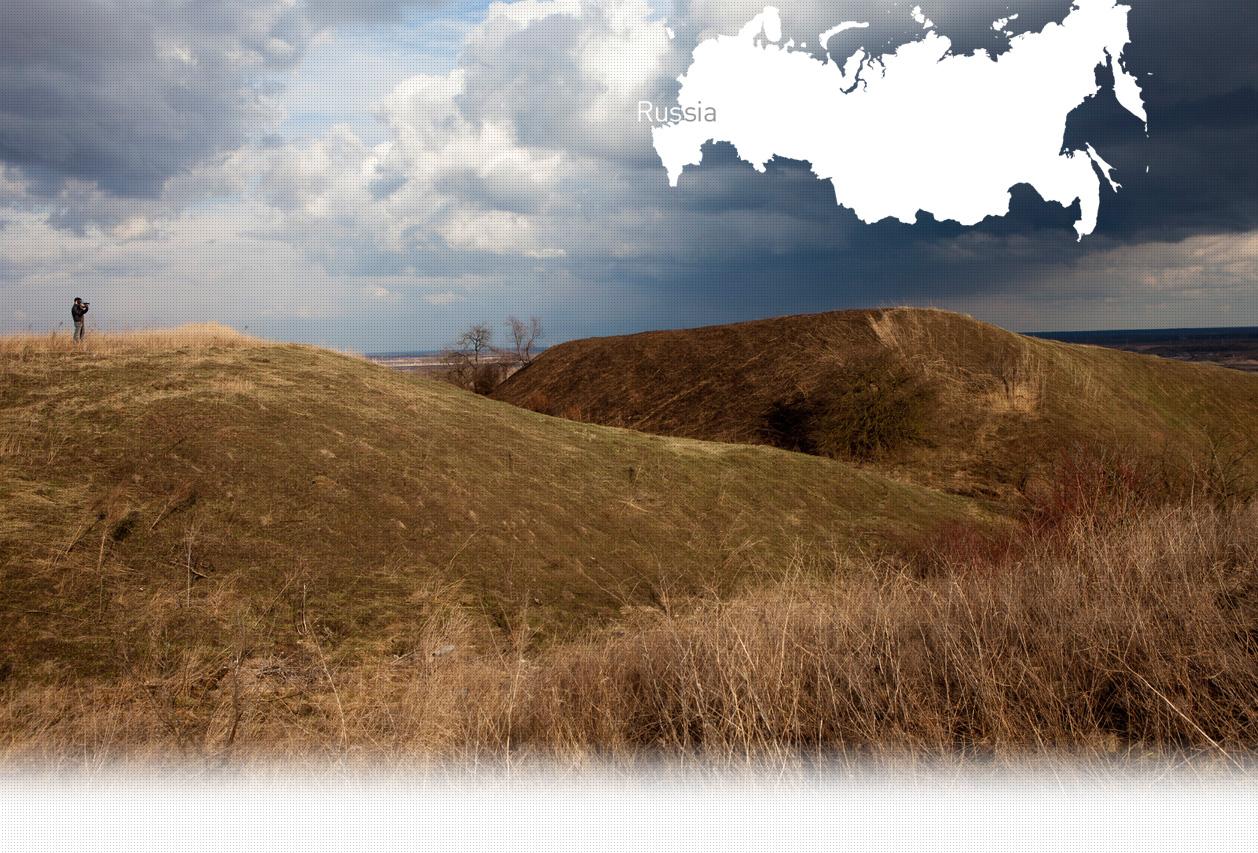

1 Killing site(s)
Piotr A., born in 1939, says: “Before the occupation, hundreds of Jews, mostly women with children, elderly people and a few young men, arrived in Stepnoye as refugees. Their final destination was Kizliar. My family sheltered three Jewish families - each had five or six children - in my house. They slept on the straw. They were brought by a man who worked in the administration. They seemed to be prosperous and had a lot of belongings with them. They didn’t work. They spoke Russian without an accent but also spoke their own language. I had some friends among the Jewish children. The Jews bought food at the market and from the locals and cooked by themselves. They had stayed in Stepnoye one or two weeks before the Germans arrived. ” (Testimony n°564 interviewed in Stepnoye on October 20th, 2015)
“In September 1942, the German command ordered all of the Jewish population to gather near the Stepnoye Kommandantur building. As usual, the Germans lied to the victims: people who obviously had been sentenced to death were told that they had to present themselves for registration in order to be sent to a new place of residence. On September 19, at the indicated time, 480 residents gathered at the indicated place in Stepnoye. The majority of them were women, children, and elderly people. Once all the valuables were taken away from the Jews, the massacre of the Soviet civilian citizens started. It was Germans and their collaborators who conducted it. Huge German buses, with black curtains inside, arrived on the spot. The Jews were forced inside in groups of 60-70 people. 10-15 minutes later, the crammed vehicles left, and then came back for the next groups. As a result, 480 people (women, children, and elderly people) were transported outside Stepnoye. It was established that they all were murdered with exhausts gases inside the vehicles. Their bodies were then thrown into large pits and covered with a thin layer of soil. ” [Act drawn up by the State Extraordinary Commission on July 22nd, 1943 in Stepnoye; RG 22.002M:7021-17-11]
“A special commando of 18 Germans assisted by 4 Russians arrived on the spot. They had 5 vehicles. I was part of this commando. The entire commando, a veritable punitive detachment, arrived in the village of Stepnoye. There, the Germans shot about 60 Jews. Then, the small groups of about 10 people were taken outside of the village but not far. There, the civilians were looted and killed. The robbed belogings were brought back to Stepnoye. My task was to guard the administrative building where the commando was stationed. [...] One morning the commander arrived at our place [in Pyatigorsk] and said: “Pack everything!” We took our belongings and got into a truck. 22 people including me were brought to Stepnoye. We were settled in a building not far from the post office. The village mayor, a Volksdeutsche, arrived on the 6th or 7th day to see our chief. I don’t know what they talked about. The next morning, the Jews gathered with their luggage near the post office building, 300m from our headquarters. There were about 60-70 people. They were immediately loaded into a truck. The Germans took the three cars parked beside. All the Jews were taken outside the village and shot to death. The vehicle made two or three round trips. I knew it because the Germans brought the Jewish belongings back to the post office building. Everything was put in a pile. The Germans sorted them until evening, looking for valuables. The rest of the belongings they left. It was taken afterwards by the locals. ”[Interrogation of a former policeman Piotr K., who assisted to EK12, drawn up on February 6th, 1946; B162-1284]
Stepnoye is situated 270 km north-east of Stavropol. The settlement was founded in 1887. According to the local villager interviewed by Yahad, in the prewar time there were three kolkhozes in the village. Only three Jewish families lived in Stepnoye before war. They had many children. They were engaged in a small-scale trade. Hundreds of Jews, the majority of whom were women with children, old men and some young men arrived in the village in July-August 1941 to evacuate later to Kizliar.
The Germans occupied the village in August 1942. Immediately after the occupation the Germans established their Kommandantur and appointed a new starosta. The Jews were murdered in two major aktions. One of them was conducted on September 19th, 1942, when about 480 people were gathered near the Kommandantur under the pretext of being resettled to another locality. After they were gathered, they were loaded into the gas vans and murdered with exhaust gases while being transported to the site where their bodies were thrown into the pit. However, according to the witness not all were poisoned with exhausts gases. Older children were poisoned with a substance that was put under their noses. Another execution was conducted shortly after against 60-70 Jews. During this execution the victims were taken by truck outside the village, looted, and shot to death. The execution was conducted by a special German commando that arrived from Pyatigorsk for this occasion. They were assisted by four local policemen.
Do you have additional information regarding a village that you would like to share with Yahad ?
Please contact us at contact@yahadinunum.org
or by calling Yahad – In Unum at +33 (0) 1 53 20 13 17